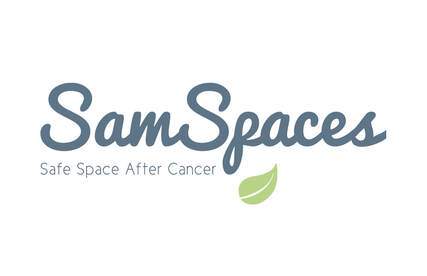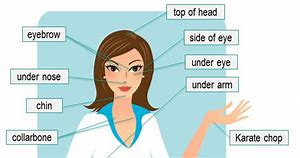|
If you’d have told me two years ago that I’d be tapping on parts of my body to ‘release energy’ and repeating funny phrases whilst I was doing it, I’d have probably laughed in your face. If you’d have then said I’d go on to use this technique with other people in coaching sessions (where they want to!), I’d have told you to shut the front door. Yet, here I am, doing both these things.
I first found out about Emotional Freedom Technique (EFT, also known as Tapping) not when the Daily Mail reported that Lily Allen used it to quit smoking but when I was beginning to understand more about the tools and techniques that would help me recover emotionally from my cancer experience. During it, I had all the traditional works (surgeries, chemo and other drugs) and also complementary support from acupuncture, massage and reflexology to help with sleep, stress and general wellbeing. This is no miracle healing story, I wanted and needed all the conventional drugs I could get my hands on but also knew that my mind needed holistic support. When it was all over, even a few years later, I knew I had some thinking patterns that were stuck and weren’t helping me, and wanted to venture further than the traditional coaching and therapy type support I was finding. So when I saw a friend’s EFT video, whilst it looked a little strange, I was open to trying and engaging with it. I was particularly drawn to the idea that it combines the physical and emotional aspects of our experiences, helping us to re-programme memories and thoughts that are destructive, by using both the body and words. I also liked how, once I’d learnt the technique, I could use it independently any time I liked, unlike other talking or body therapies like acupuncture. Finding EFT videos online and then a practitioner, I realised it was something I responded to really well. It allowed me to focus on specific parts of a memory or thoughts that were troubling me, and to pick it apart gently without ‘flooding’ into the whole event. I loved it so much, and felt so much better – for me, lighter, brighter and calmer – that I went on to train in it and use it as a tool within my coaching practice with others. What is EFT? EFT is a form of non-needle acupuncture deriving from a Chinese medicine background of understanding the meridian energy points in the body. Tapping along these in particular sequences is said to bring about energy shifts, resulting in difficult memories or feelings being experienced differently e.g. a reduction in anxious thoughts or a change in an experience of pain. EFT can be done with a trained practitioner and also on your own once you’ve learnt the technique. The points you tap on are shown above: The words spoken during the tapping are as important as the tapping itself. The set-up phrase leads the topic of what will be tapped on. There are two parts to this phrase. Part 1 is an acknowledgement of the issue you’re facing. It should be as specific as possible, so rather than ‘even though I have anxiety’ being more specific is preferable, such as ‘even though I have anxiety about going back to hospital’. Part 2 is the acceptance of this feeling. This isn’t trying to make you be OK with the feeling, nor is it to cause you guilt that you don’t already. Rather, it’s a way of giving yourself kindness in acknowledging you feel this way. This is usually ‘I deeply and completely accept myself’ or ‘I accept this anyway’ or even ‘I’m OK’ – whatever feels right at the time. The set up phrase is completed three times whilst tapping on the karate chop point (see to the EFT diagram above), to focus the session. The full tapping sequence is then completed using key words from the set up phrase. You tap on the points at the speed and strength that feels comfortable. Before we start, we also rate the intensity of the identified issue on a scale of 1-10, with 10 being the most intense, to understand the level before starting tapping. What’s the outcome? Most people report feeling differently about their issue after a few rounds of tapping and talking. It may be that the feeling or emotion sits physically somewhere different in the body, or a pain they had before feels different, or is even gone. If you’re working with a practitioner, they would continue to ask questions and further look at the detail of the issue, doing more rounds of tapping until the intensity has changed significantly. This isn’t about a cure – I practice EFT and use it with others not claiming that it will cure an anxiety disorder, acne, arthritis or cancer (and I personally would run a mile if someone had these claims). This is about managing thoughts and feelings that we also experience in our body, in order to feel differently and hopefully better about them. What’s the evidence it works? Empirical evidence supporting EFT is available but thin on the ground, which isn’t surprising – as an alternative therapy there is little incentive to fund research to test its efficacy. But the way I see it, using EFT, along with other complementary therapies, is a personal choice. If you discover something you’re interested in and benefit from it in some way, I encourage you to go with that, rather than questioning it or having it questioned by others. Why do we think it works? Repetition – repeating out loud the issue that’s troubling you, especially with a practitioner, takes the pressure off of it being stuck in your head and equally starts to numb the intensity of it. It may be the first time you’ve acknowledged this is an issue and that can also bring relief. Acceptance – In being honest with ourselves that we feel something we don’t like but we’re alright anyway it bring a strength to our thinking. - there’s an element of forgiveness and understanding that we don’t often allow ourselves. Adjusting energy – tapping on the points in sequence does produce shifts. It will be different for each person and EFT may not be for some people but it does have funny, interesting, results. I usually laugh or yawn a lot when I do my own rounds and for me that’s a sign that something is moving around. I equally might feel quite teary for a day or so and whilst I don’t want to feel sad, I know it’s moving things in my mind that needed to be released and that’s super important for me. There are many ways to use and interpret EFT, and likewise a range of practitioners. I trained with the EFT Centre in North London which offers good online resources for different areas of EFT use and you can also find great videos from practitioners like Brad Yates. I’ve also created a video specially for SamSpaces followers as well as a written tapping sequence below, both of which cover the topic of anxiety about returning to hospital (and are slightly different from each other) So if your interest is peaked, try it out and see how it feels. Like it? Great, find more videos that resonate with you, or feel free to get in touch with me to find out more. A cancer experience is tough enough and we should take full advantage of all the support, during and after, that we can get…err tap!...our hands on. Watch the unique SamSpaces EFT video here! You can email me at [email protected] and find out more at coachingemily.com Example EFT tapping sequence This written sequence focuses specifically on the issue of anxiety about a scan. You can replace these words with others words that are pertinent to you at any time. Step 1 Rate the intensity of the anxiety about your scan on a scale of 0-10, with 0 being the least intense and 10 being the most. Remember this number for later. Step 2 Say the set up phrase whilst tapping on the karate chop point: Even through I’m feeling anxious about going for my scan, I accept myself anyway Even though I have anxiety about my scan, I accept I have it Even though my anxiety about my scan is high, I deeply and completely accept myself anyway, and I’m OK Step 3 Tap on each of the following nine points with these phrases: In between eyebrows point: “anxiety about my scan” Side of the eye: “anxiety about scan” Under eye/cheekbone – lots of anxiety about my scan Under nose – feels high Under bottom lip – thinking about this a lot Sternum – distracted about my scan coming up Under arm – don’t want to think about my scan but I am Top of the head – anxiety about the scan Repeat Step 3 Step 4 Bring your hands to a rest and close your eyes. Take two deep breaths. Then rate the intensity of the anxiety again. Observe whether it has stayed the same, increased or decreased. If increased you may want to take further breaths and just tap around on the points without the words before checking the intensity level again. If it is the same or decreased, notice what words or thoughts came up for you in the last round and begin to use these words in a new set up phrase and tapping sequence. Continue until the number has reduced sufficiently for you. Close the session with further deep breaths. Please note that in carrying out this technique on your own you are taking full responsibility for your own health. Thanks ☺
0 Comments
Leave a Reply. |
guest blogsThese are a collection of blogs written by other cancer patients, survivors, friends and family as well as wellbeing and health therapists who wanted to share their expertise to help inspire and encourage us with recovery and healing. Over the last thirteen years I have put a lot of time and focus into my own self care and I have explored many activities and products that I wanted to share, so I have written a few too! Enjoy xx Archives
May 2020
Categories
All
|



 RSS Feed
RSS Feed
